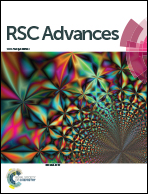Recyclability of organically modified clays for oil absorption and recovery
Abstract
Organically modified layered silicates (OLS) were prepared via ionic exchanging intercalation of natural clays, such as sodium montmorillonite (MMT), by fatty alkyl amines, such as n-octadecylamine (ODA), and used for hydrocarbon recovery. Comparisons of OLS modified by different stoichiometries of ODA and by poly(oxypropylene)amines were conducted. OLS were characterized by X-ray diffraction (XRD) to study the correlation between their basal interlayer spacings and the efficiency of their oil absorption. With different ratios of ODA to the cationic exchanging capacity (CEC) of clay, the basal spacings were expanded from the pristine 12 Å to 28 Å (0.5 CEC), 30 Å (1.0 CEC), 30 Å (1.5 CEC) and 34 Å (2.0 CEC). After crude oil absorption, the OLS were further expanded in interlayer spacings to 45–48 Å or even evolved into a featureless via XRD. The observed oil absorption efficiencies were up to 9 times by mass that of oil-on-clay; moreover, OLS/oil aggregation into lumps from water was observed. The oil absorption–desorption cycle was repeated three times, demonstrating the feasibility of clay reuse and oil recovery. Our findings revealed the stability of the clay/oil structure and the process suitability of fatty amines as the intercalating organics. The high oil-absorbing efficiency and recyclability indicate suitability of OLS for practical applications, including in the remedy of oil pollution in water, enhancing oil recovery and hydraulic fracture and the shale-oil fracking process.


 Please wait while we load your content...
Please wait while we load your content...